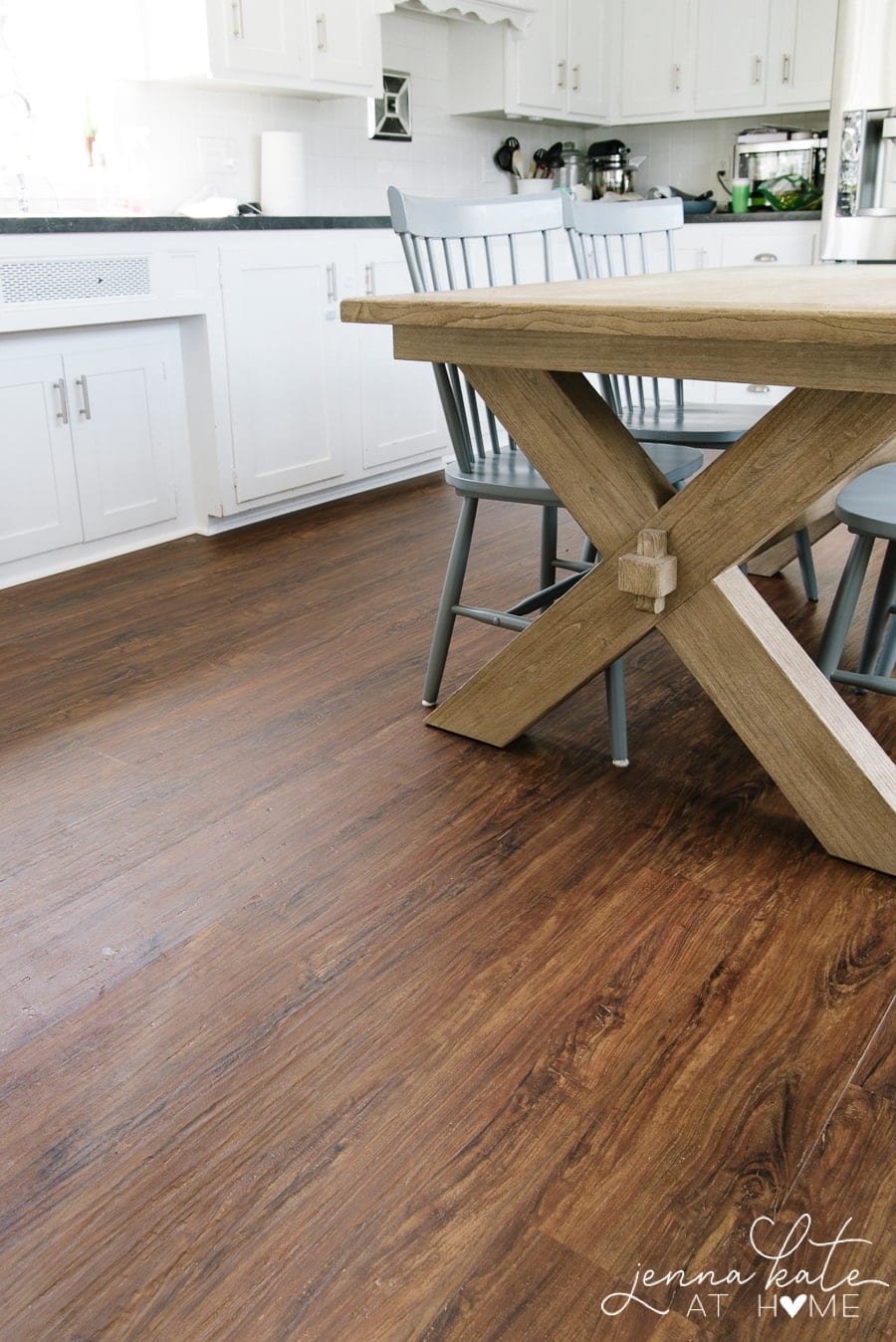To install kitchen flooring, start by measuring the area and choosing the flooring material. Then, prepare the subfloor, lay the underlayment, and start installing the flooring.

Credit: jennakateathome.com
Table of Contents
Choosing The Right Flooring Material
Choosing the perfect flooring material for your kitchen involves several essential factors. Consider your lifestyle, budget, and desired aesthetic. Ceramic tile is a popular option due to its durability and variety of design options. Vinyl flooring is affordable and water-resistant, making it suitable for kitchens prone to spills.
If you prefer a warmer feel underfoot, hardwood flooring offers timeless appeal. Engineered hardwood is a more budget-friendly alternative that resists moisture better. Laminate flooring mimics the look of hardwood but is more budget-friendly and easy to maintain. For those seeking eco-friendly options, bamboo and cork flooring are sustainable choices.
Overall, make sure to consider factors such as durability, ease of installation, maintenance, and your personal style preferences when selecting kitchen flooring.
Preparing The Floor For Installation
Preparing the floor for installation begins with clearing the area and removing any old flooring.
How To Install Kitchen Flooring
To install kitchen flooring, you will need specific tools and materials. Measure and cut the flooring to fit the space accurately. Make sure to properly install the underlayment for added stability and protection. Using the right tools and following the correct steps will ensure a successful kitchen flooring installation.
Remember to consider the type of flooring material you are using and follow manufacturer guidelines for best results. Take your time during the installation process to ensure everything is done correctly. With careful planning and attention to detail, you can have beautiful kitchen flooring that will enhance the overall look and functionality of your space.
Installing Different Types Of Flooring Materials
Installing kitchen flooring is an essential part of any home renovation project. When it comes to choosing the right flooring material, it’s important to consider factors such as durability, maintenance, and aesthetics. Vinyl flooring is a popular option that offers versatility and affordability.
It is easy to install, with adhesive or click-lock systems, and provides a durable and water-resistant surface. Tile flooring, on the other hand, offers a timeless and elegant look. It requires proper subfloor preparation and the use of thinset mortar for installation.
Hardwood flooring adds warmth and character to any kitchen. It needs to be acclimated before installation and can be installed using nail-down, glue-down, or floating methods. By carefully following the manufacturer’s instructions and using the right tools, you can install kitchen flooring that will transform your space and withstand the test of time.
Finishing Touches
Installing kitchen flooring is an important step in completing your kitchen renovation. Once you’ve covered the basics, it’s time to focus on the finishing touches. One of these includes sanding and sealing hardwood floors. This process helps to smooth out any imperfections and protect the wood.
For tile floors, it’s essential to grout and seal them properly to ensure durability and longevity. Properly cleaning and maintaining your kitchen flooring is also crucial to keep it looking its best. Regular sweeping, mopping, and using appropriate cleaning products will help to preserve its quality.
Remember, taking care of your kitchen flooring will not only enhance the aesthetics but also ensure its longevity.
Frequently Asked Questions On How To Install Kitchen Flooring
How Much Does It Cost To Install Kitchen Flooring?
The cost of installing kitchen flooring can vary depending on factors such as the type of flooring material, size of the kitchen, and labor costs. On average, homeowners can expect to spend between $2,000 and $5,000 for installation. It is best to get a few quotes from reputable contractors to get a more accurate estimate for your specific project.
What Are The Best Flooring Options For Kitchens?
When it comes to kitchen flooring, durability and water resistance are key factors. Some of the best flooring options for kitchens include ceramic tile, vinyl, laminate, and hardwood. These materials are easy to clean, withstand high traffic, and provide a stylish look that complements any kitchen design.
Can I Install Kitchen Flooring Over Existing Flooring?
In some cases, you may be able to install new kitchen flooring directly over the existing floor. However, it depends on the condition and type of the existing floor. It is important to consult with a professional to determine if this is a viable option for your kitchen.
They will assess the current flooring and provide recommendations based on your specific situation.
Conclusion
Revamp your kitchen with a stunning new flooring installation that not only enhances the aesthetics but also adds value to your home. By following these simple steps, you can easily install kitchen flooring without the hassle and stress. Start by choosing the right type of flooring material that suits your style and needs.
Measure the space accurately and prepare it properly for installation, ensuring a smooth and durable foundation. Next, select the appropriate installation method, whether it be adhesive, click-lock, or floating. Finally, carefully install the flooring, ensuring a snug fit and proper alignment.
Whether you choose to install vinyl, tile, laminate, or hardwood, the end result will be a beautiful and functional kitchen floor that you can enjoy for years to come. Embrace this diy project and transform your kitchen into the heart of your home!

